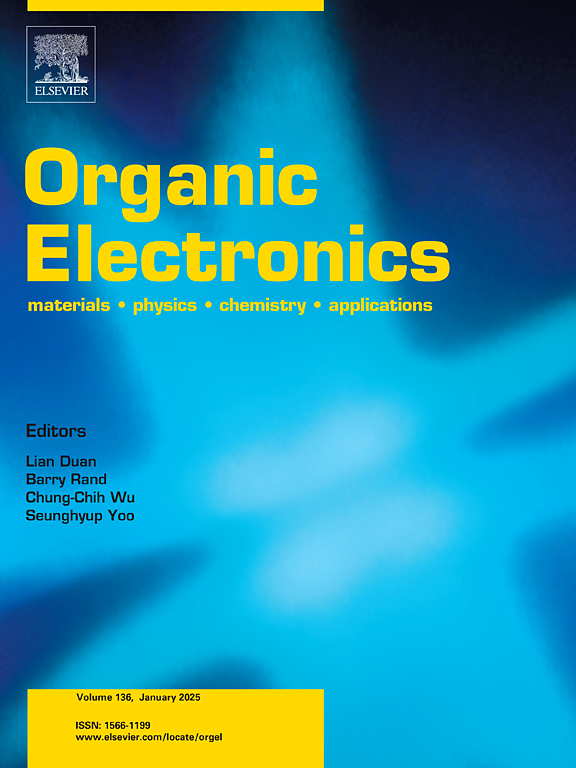Interface modification by sulfonamide for high-efficiency and stable perovskite solar cells
IF 2.6
4区 工程技术
Q3 MATERIALS SCIENCE, MULTIDISCIPLINARY
引用次数: 0
Abstract
Tin dioxide (SnO2) is a promising material for the electron transport layer in n-i-p perovskite solar cells, but its performance is limited by internal defects and band misalignment with the perovskite layer. In this study, para-hydroxybenzenesulfonamide (PCBS) was used to modify the buried interface between SnO2 and perovskite. The -COOH and S=O groups in PCBS passivate the -OH and Sn in SnO2, respectively. Meanwhile, the -NH2 group passivates the excess Pb2+ within the perovskite film. The PCBS modification enhances the hydrophobicity of the SnO2 surface, promoting the growth of high-quality, large-grain perovskite films, thereby significantly suppressing non-radiative recombination in perovskite solar cells (PSCs). Moreover, the PCBS modification introduces better energy-level alignment between the SnO2 and perovskite layers, enabling more efficient electron extraction. Finally, the PCBS interface enhanced the power conversion efficiency (PCE) of PSCs to 21.47 %. After 1440 h of storage in a N2 atmosphere, the unencapsulated PSCs with interface alteration kept 93.9 % of their original value. These results indicate that burying the perovskite layer with PCBS is a promising strategy to improve the performance of PSCs.

磺胺改性高效稳定钙钛矿太阳能电池的界面研究
二氧化锡(SnO2)是一种很有前途的用于n-i-p钙钛矿太阳能电池电子传输层的材料,但其性能受到内部缺陷和与钙钛矿层的能带错位的限制。在本研究中,对羟基苯磺酰胺(PCBS)被用于修饰SnO2和钙钛矿之间的埋藏界面。pcb中的-COOH和S=O基团分别钝化SnO2中的-OH和Sn。同时,-NH2基团使钙钛矿膜内多余的Pb2+钝化。pcb改性增强了SnO2表面的疏水性,促进了高质量、大颗粒钙钛矿薄膜的生长,从而显著抑制了钙钛矿太阳能电池(PSCs)中的非辐射复合。此外,pcb改性在SnO2和钙钛矿层之间引入了更好的能级排列,从而实现了更有效的电子提取。最后,pcb接口将pcsc的功率转换效率(PCE)提高到21.47%。在N2气氛中保存1440 h后,界面改变的未包封PSCs保持了93.9%的原始值。这些结果表明,用多氯联苯埋置钙钛矿层是一种很有前途的提高多氯联苯性能的策略。
本文章由计算机程序翻译,如有差异,请以英文原文为准。
求助全文
约1分钟内获得全文
求助全文
来源期刊

Organic Electronics
工程技术-材料科学:综合
CiteScore
6.60
自引率
6.20%
发文量
238
审稿时长
44 days
期刊介绍:
Organic Electronics is a journal whose primary interdisciplinary focus is on materials and phenomena related to organic devices such as light emitting diodes, thin film transistors, photovoltaic cells, sensors, memories, etc.
Papers suitable for publication in this journal cover such topics as photoconductive and electronic properties of organic materials, thin film structures and characterization in the context of organic devices, charge and exciton transport, organic electronic and optoelectronic devices.
 求助内容:
求助内容: 应助结果提醒方式:
应助结果提醒方式:


